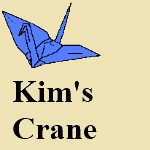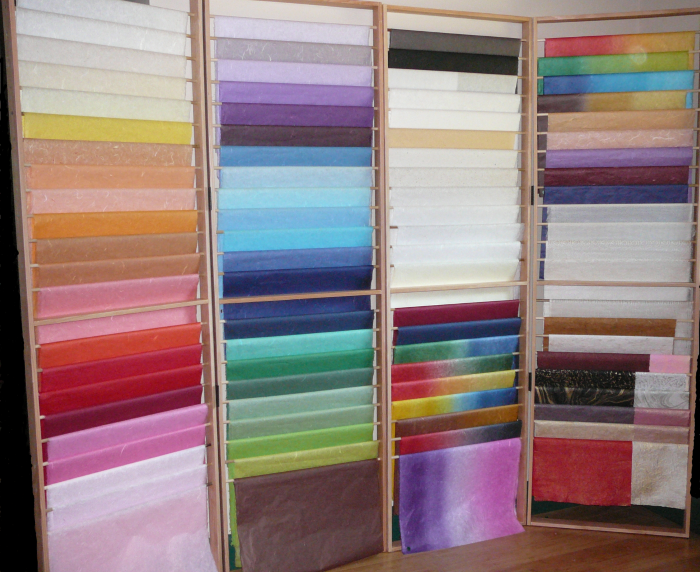No products
Product successfully added to your shopping cart
There are 0 items in your cart. There is 1 item in your cart.
Categories
-
Origami Papers
- Origami Plain Papers
- Origami Papers with Prints
- Origami Double-Sided Papers
- Origami Foil Papers
- Origami Kits
- Other Origami Papers
- Teacher's Corner - Bulk Origami
- Lucky Star Paper
- Discontinued Items
- Japanese Crepe Paper - Double Sided
- 3D or Modular Block Origami
- Papers For Chigiri-e
- Paper End Cuts
- Not Discounted
- Origami Books
- Artisan or Decorative Papers
- Accent Decor
- Elephant Hide
- Origami Related Products
- Mulberry Or Unryu Paper
- Glassine paper (translucent paper) 100% sulphite, acid free, machine made.
- Kraft Paper
- Miscellaneous Items
- Glitter Pearlized Paper
Top sellers
-

Elephant Hide Paper by Zanders - White Color
Elephant Hide Paper by Zanders is scratch proof and scuff proof, with...
$6.60 -

Origami Paper Blue Same Color Bothside - 150 mm - 30 sheets
One color per package - blue, same color on both sides of the paper. 30...
$2.60 -

Crane Egg Folding Paper
$0.48 -

Elephant Hide Paper by Zanders - Charcoal Color
Elephant Hide Paper by Zanders is scratch proof and scuff proof, with...
$6.60
New products
-

Origami Paper Double Sided Hana Print - 150 mm - 32 sheets
There are 32 sheets total; eight sheets each of the four color prints of...
$2.53 -

Pearl Pastel Origami Paper - 18 sheets - 150mm
There are 18 sheets total, six different pearl pastel colors, reverse...
$1.40 -

Cute Print Origami Paper - 150mm -14 sheets
There are 14 sheets total, four different colors of then same cute...
$1.50 -

Yuzen Washi Chiyogami Print - 5 Prints - 150mm
There are five sheets total, each sheet is a different prints of yuzen...
$4.99
-

Origami Paper 10 Different Sizes Pastel Color - 060 mm -100 sheets
There 100 sheets total; 10 different...
$0.91 -65% $2.60
The paper title, Mulberry (Unryu) paper is used to define mulberry papers with the Japanese word unryu in parenthesis. The Japanese term for Mulberry (or Saa) which is a Thai word - is unryu. Much of the Japanese unryu paper found in Japan is actually mulberry paper imported from Thailand.
Unryu is part of a family of papers which are all made from mulberry. The different papers get their surname depending on the type of mulberry used; either kozo (broussonetia papyrifera, the paper mulberry), gampi (wikstroemia diplomorpha), or mitsumata (edgeworthia chrysantha). See https://en.wikipedia.org/wiki/Paper_mulberry
It is the kozo (broussonetia papyrifera, the paper mulberry)that is used to produce the mulberry paper. Mulberry papers are semi-translucent, wonderfully light weight, cheerful in color, soft in texture, and have long kozo fibers visible when the paper is held up to the light. The handmade mulberry papers are usually much heavier in weight over 100gsm and thicker due to inclusions such as petals, leaves or bark which adds to the decorative finish as well as providing texture and density due to the drying and pressing process. The Unryu/mulberry paper that is sold by Kim's Crane is the commercial machine made mulberry paper which is light weight allowing for a dye color base that is much more cheerful and diverse. Interesting to note, mulberry paper cannot be destroyed by insects. The mulberry tree is a perennial plant that grows plentifully throughout Southeast Asia and is cut about every eight months to take the fiber, which is used for producing the mulberry paper. Although the mulberry tree is cut, it easily is regrown. The exact same raw materials (mulberry or saa) is used for the commercial machine made mulberry paper as for the thicker hand made made mulberry paper. The dye color is obtained by using natural vegetable dyes during the manufacturing process.
The machine made mulberry paper comes with two deckle longitudinal edges and is pH neutral. The paper can be easily torn or cut to meet a specific craft project. For origami, whole sheets are often used in tissue foil, a process where a light weight glue is used to adhere a sheet of the mulberry paper to each side of a piece of kitchen (baking) foil. For more information on how to make tissue foil please see You Tube videos. The Japanese word unryu is translated cloud dragon due to the thin kozo fibers or strands seen throughout the paper. Some of the papers have embedded metallic strands of either silver or gold or the top of the paper is brushed in gold or silver.
Due to the unique characteristics of this paper it is ideal for so many diverse paper craft projects; origami, tissue foil, rubber stamping, scrapbooking, card making, mixed media collage, painting and block painting, lamp shades, Japanese screens, sky lanterns, wedding invitations, fish rubbings, chine colle, chigir-ie, gift wrapping, and so much more.
This article has been authored by Kimberly Crane. All rights reserved, please contact Kimberly Crane at kim@kimscrane.com for authorization to copy material in this article.



